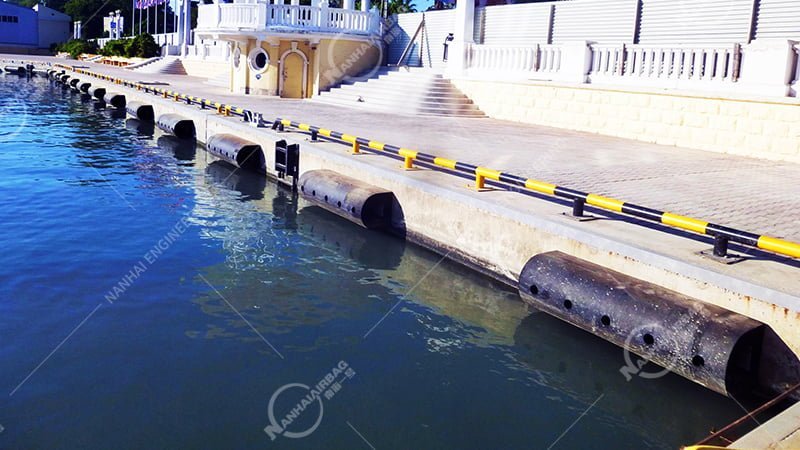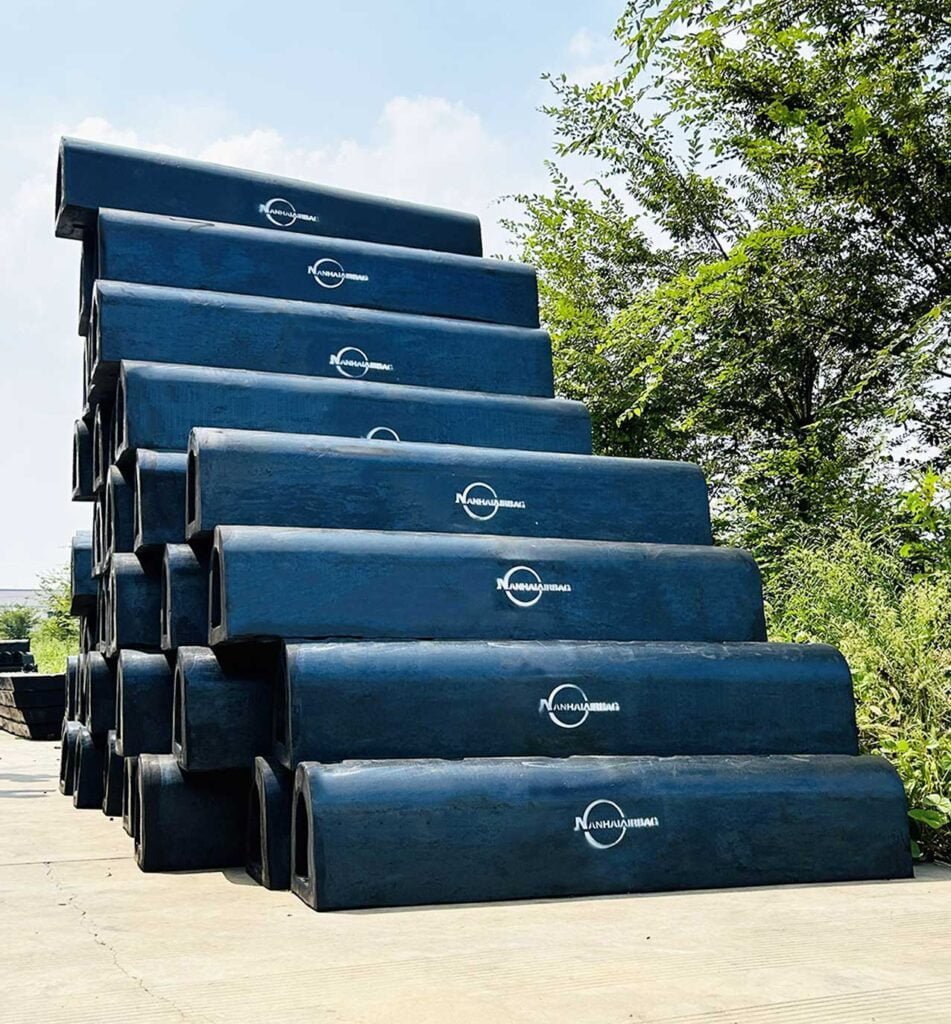Green Shipbuilding with Ship Launching Airbags
07/17/2025How to store pneumatic fenders ?
07/18/2025How Are High-Quality Rubber Fenders Produced?
Why Producing High-Quality Rubber Fenders Matters Now
Ships are getting bigger, ports are getting busier, and collisions can cost millions. Rubber fenders protect both ships and docks from damage. But not all fenders are equal. Some low-quality products break early, leading to accidents and expensive repairs. At NANHAI, we’ve seen cases where poor fenders caused vessel damage. That’s why choosing high-quality rubber fenders is more urgent than ever.

How Are High-Quality Rubber Fenders Produced?
1. Raw Materials: The Foundation of Performance
Quality begins with the right formula. We use a mix of natural rubber (NR) and synthetic rubber (SBR), plus carbon black, calcium carbonate, and anti-aging chemicals. These materials help make the fender strong, elastic, and weather-resistant.
2. Mixing: Even and Active Processing
We mix the rubber in two steps:
- First stage: Blend rubber and fillers to create a smooth base.
- Second stage: Add sulfur and other agents for vulcanization.
This two-stage mixing helps ensure the rubber performs well under stress.
3. Molding and Vulcanizing: Giving Shape and Strength
We shape the rubber using:
- Compression molding for large or custom fenders.
- Extrusion or injection molding for simple shapes like D-type fenders.
We then heat the molded rubber under pressure to cross-link the molecules. This vulcanization step boosts the fender’s strength and durability.
4. Finishing and Testing: Final Quality Check
Before leaving our factory, we:
- Trim the edges for a clean look.
- Test each fender for compression strength, tear resistance, aging, and water swelling.
NANHAI follows global standards like ASTM, ISO, and PIANC.

Why Trust Rubber Fenders from NANHAI?
- Tailored Rubber Formulas: We adjust materials based on your needs.
- Professional Mixing Equipment: We use precision mixers to avoid raw spots.
- Controlled Vulcanization: We use digital tools to fine-tune time, temperature, and pressure.
- Strict Testing: Every fender goes through full mechanical and visual inspections.
Featured Snippets
What are high-quality rubber fenders?
They are marine fenders made with strong materials, double-stage mixing, controlled vulcanization, and full testing to absorb impact and last longer.
What are the steps to produce rubber fender?
Mix materials → Mold and shape → Vulcanize → Test and finish.
Why choose NANHAI rubber fender?
NANHAI uses advanced rubber formulas, expert processing, and strict testing to make strong and reliable fenders for global marine use.
FAQ
What shapes of rubber fenders can NANHAI produce?
NANHAI manufactures a wide range of rubber fender types, including:
- D-type fenders
- Arch fenders
- Cone fenders
- Cell fenders
- Tugboat fenders
- pneumatic fenders
Each shape serves different port and vessel needs. We can also customize fenders based on your project.
What shapes of rubber fenders can NANHAI produce?
NANHAI produces various fender types, including D-type, arch, cone, cell, and tugboat fenders. We also offer customized shapes for special applications.
What materials are used to make high-quality rubber fender?
High-quality rubber fender use natural rubber (NR) and synthetic rubber (SBR), along with carbon black, calcium carbonate, and anti-aging additives. These materials help the fender stay strong and flexible over time.
How are rubber fenders tested before delivery?
Before shipping, rubber fenders go through strict tests for compression, tear strength, aging resistance, and swelling in water. NANHAI follows international standards like ISO and ASTM.
Why is vulcanization important in rubber fender production?
Vulcanization strengthens the rubber by linking its molecules. It makes the fender more elastic, durable, and resistant to extreme weather and pressure from ship impacts.
